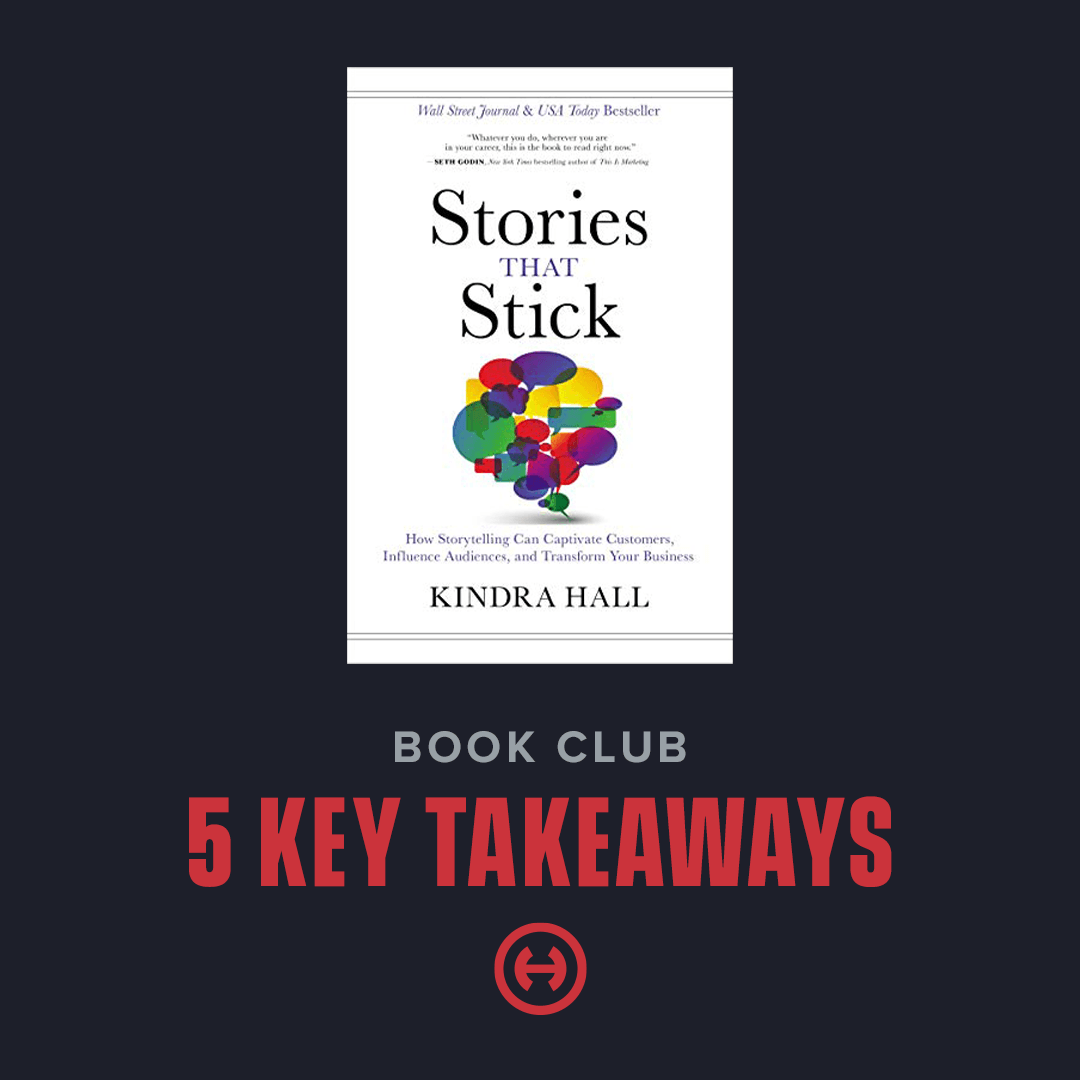In our latest agency Book Club, we discussed “Stories That Stick: How Storytelling Can Captivate Customers, Influence Audiences, and Transform Your Business” by Kindra Hall. As someone who discovered her passion for storytelling in her childhood, Hall provides actionable steps for mastering the power of storytelling for any situation. She also describes how four essential stories – the Value, Founder, Purpose and Customer – can become powerful business tools for winning both in business and life. If you’re looking for an inspiring read that can help you tap into your own inner storyteller, you can pick up a copy here. If you’re short on time, however, we’ve highlighted five quick takeaways below.
- Stories have the power to bridge gaps. No goal worth obtaining is obstacle free. While this saying may be true, Hall challenges us to reframe our thinking around the term “obstacle.” Instead of treating them as hurdles between us and our goals, we should instead think of them as the gaps between where we are and where we want to be. These so-called gaps are everywhere and the best way to overcome them is to use the power of story to build bridges. Have you experienced a gap when trying to close a sale, win a new client or find and hire new talent? Each of those situations can be solved by telling the right story. Stories that build bridges most effectively do the following: 1) capture the audience’s attention; 2) inspire a desire to take action; and 3) create feelings around transformation and lasting impact.
- Every great story should include four key components. 1.) First and foremost, your story will need an Identifiable Character(s). Stories don’t need to have a “hero” to make an impression. The identifiable character can be yourself, a business owner, a friend or a family member – someone authentic and real. 2.) Make your chosen identifiable character relatable for your audience; include the Authentic Emotion that they experienced throughout the story. While the emotion doesn’t need to be overly dramatic, it will help shape the state of mind of the character for your listeners. 3.) Stating the Significant Moment in time when the story took place will provide a frame of reference and set the scene for your listener. 4.) Lastly, include plenty of Specific Details with clear descriptions for everything you can. You want your listener to illustrate your story in their own mind, so the finer and more specific the details you include, the better. Think of the last story you were told. Can you recall and identify each of those components? If so, that’s a sign of a powerful story.
- Follow the framework. In elementary school, we all learned the general succession of 5-7 actions in the plotline of every story (conflict, rising action, climax and so on), but Hall breaks it down to a much easier, three-step framework. Simply stated, every story must follow the structure of Normal à Explosion à New Normal. For the Normal, give your audience the time and place to ground your audience in the moment. Then talk about your character: describe their thoughts and feelings, and where and what they’re doing to give your audience a reason to want to stick with you. In the Explosion, describe their pivotal moment. Was an important decision made? Did something wonderful, tragic or terrifying happen? Good, bad or ugly, discuss what has changed for your character. Then, in your New Normal, describe what life is like now that the character has gone through that Explosion step. This is where you can tie the lesson learned back to what it means for your audience.
- Different stories work best in different situations. The largest section of the book discusses the Four Essential Stories that come up frequently in the world of business. Each has a unique purpose and appropriate audience, and the gap you’re looking to bridge will help you determine the best type of story to share.The first of the four essential stories is the Value Story. Value stories are meant to sustain what a company offers and provide insight to prospective customers about what the brand has to offer them. The Founder Story gives the audience a background on the business and boosts confidence of key players like investors, partners and the employees. A Purpose Story is meant to highlight and align internal teams with a common motivation that embodies the company’s mission statement. Finally, the Customer Story is a classic marketing tactic used to communicate a brand experience. This type of story is a powerful tool for sales and marketing teams to use feedback from existing customers to reel in prospective clients.
- Your stories are valuable, so tell them. One of the biggest reasons that Hall says people don’t share their stories is that they don’t believe they have a story or don’t think their story is important enough to share. This couldn’t be further from the truth. You’ve had thousands of experiences and memories over the course of your lifetime. At the end of the day and with enough time and attention, each of those memories can be turned into a great story.
